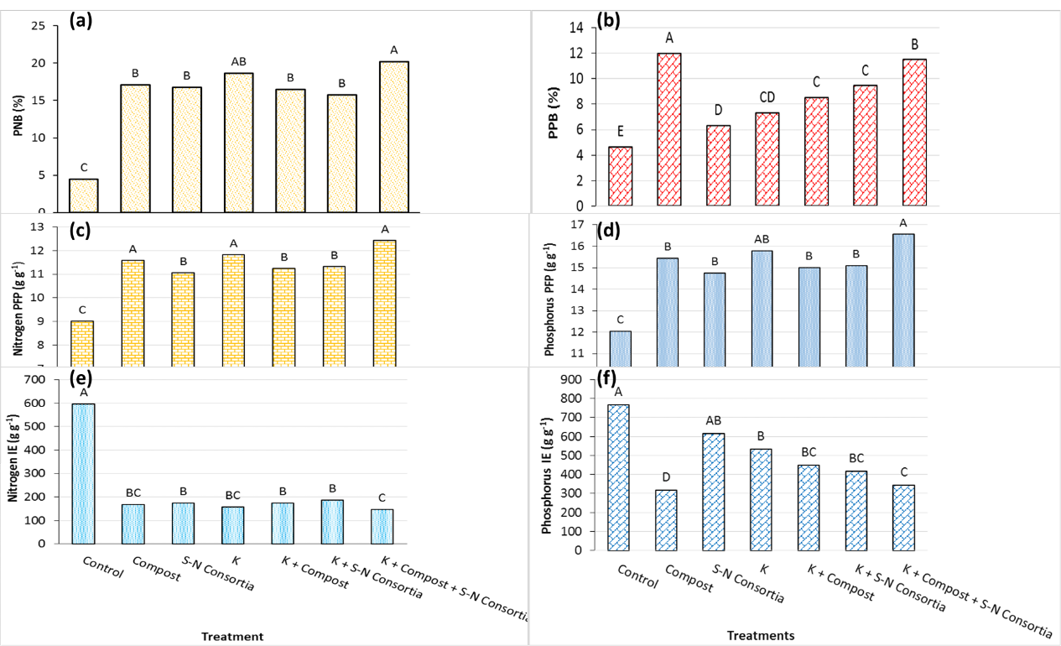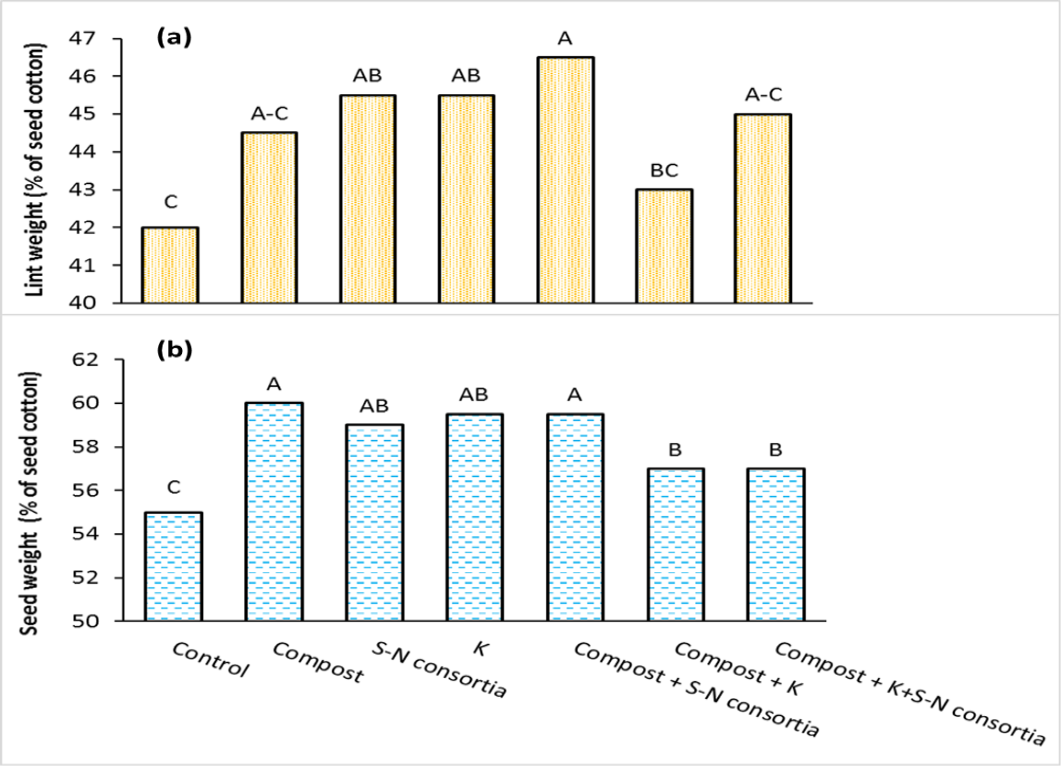Integration of Compost and Salicylic Acid–Micronutrients Consortia with Conventional Fertilizers to Alleviate Heat Stress on Nutrient Use Efficiency, Yield and Quality of Cotton
Integration of Compost and Salicylic Acid–Micronutrients Consortia with Conventional Fertilizers to Alleviate Heat Stress on Nutrient Use Efficiency, Yield and Quality of Cotton
Muti Ul Hannan1, Wazir Ahmed1, Muhammad Naeem Akhtar2*, Muhammad Baqir Hussain1 and Khuram Mubeen1
Comparative effects of integrated compost, S-N Consortia and K application with conventional fertilizers on gas exchange characteristic and water use efficiency. Bars with same capital letter(s) are at par (p <5%) according to HSD test.
Improvements in monopodial and sympodial branches of cotton due to integration of compost, S-N Consortia and K application with conventional fertilizers. Bars with same capital letter(s) are at par (p <5%) according to HSD test.
Improvements in flowers and open bolls per cotton plant due to integration of compost, S-N Consortia and K application with conventional fertilizers. Bars with same capital letter(s) are at par (p <5%) according to HSD test.
Improvements in seed cotton yield due to integration of compost, S-N Consortia and K application with conventional fertilizers. Bars with same capital letter(s) are at par (p <5%) according to HSD test.
Integrated effects of compost, S-N Consortia and K application on N, P and K contents of cotton shoot. Bars with same capital letter(s) are at par (p <5%) according to HSD test.
Comparative effects of integrated compost, S-N Consortia and K application with conventional fertilizers on nutrient use efficiency. Bars with same capital letter(s) are at par (p <5%) according to HSD test.
Comparative effects of integrated compost, S-N Consortia and K application with conventional fertilizers on soil characteristics after harvesting of cotton crop. Bars with same capital letter(s) are at par (p <5%) according to HSD test.
Improvements in lint to seed weight induced by integration of compost, S-N Consortia and K application with conventional fertilizers. Bars with same capital letter(s) are at par (p<5%) according to HSD test.
Comparative variations in seed-cotton fiber quality parameters as result of integration of compost, S-N Consortia and K with conventional fertilizers. Bars with same capital letter(s) are at par (p <5%) according to HSD test.
















